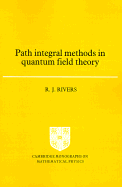Book contents
- Frontmatter
- Contents
- Preface
- 1 Scalar Green functions and their perturbative solutions
- 2 Connected Green functions and their one-particle irreducible components
- 3 Regularisation and renormalisation
- 4 The scalar functional integral
- 5 Series expansions and their summation
- 6 Taking the path integral more seriously
- 7 Quantum theory on non-simply-connected configuration spaces
- 8 Stochastic quantisation
- 9 Fermions
- 10 Quantum electrodynamics
- 11 Non-Abelian gauge theories
- 12 Explicit symmetry breaking and its classical limit
- 13 The effective potential
- 14 Field theory at non-zero temperature
- 15 Field theory at non-zero temperature: real-time formulation
- 16 Instantons
- 17 Composite fields and the large-N limit
- References
- Index
- Frontmatter
- Contents
- Preface
- 1 Scalar Green functions and their perturbative solutions
- 2 Connected Green functions and their one-particle irreducible components
- 3 Regularisation and renormalisation
- 4 The scalar functional integral
- 5 Series expansions and their summation
- 6 Taking the path integral more seriously
- 7 Quantum theory on non-simply-connected configuration spaces
- 8 Stochastic quantisation
- 9 Fermions
- 10 Quantum electrodynamics
- 11 Non-Abelian gauge theories
- 12 Explicit symmetry breaking and its classical limit
- 13 The effective potential
- 14 Field theory at non-zero temperature
- 15 Field theory at non-zero temperature: real-time formulation
- 16 Instantons
- 17 Composite fields and the large-N limit
- References
- Index
Summary
The use of functional in the quantisation of relativistic local field theories has a long history, going back to the work of Schwinger and Symanzik in the 1950s. As exemplified by the generating functionals for Green functions, they can embody the canonical Hamiltonian results in a very convenient way (the Dyson–Schwinger equations). By the end of the 1960s the use of functionals had become standard practice (see Fried's book of 1972 with essentially the same title as this) but it was by no means obligatory. Straightforward manipulation of Feynman diagrams was often sufficient.
The renaissance of field theory in the 1970s after the failure of the pure S-matrix approach was based on models that were much more complicated than those used hitherto. Non-Abelian gauge theories, spontaneous symmetry breaking, supersymmetry (to name but three essential steps) required a reappraisal of tactics. At the same time the quantities that needed to be calculated changed in character. Rather than S-matrix elements it was important to determine free energies, tunnelling decay-rates, critical temperatures, Wilson loops, etc.
These quantities, with a natural definition via the standard functionals of the theory, required an approach based on them. The ingredient that gave the functional approach the additional power to cope with the new complexity was the side-stepping of canonical Hamiltonian methods by the use of path integrals to represent the functionals.
Information
- Type
- Chapter
- Information
- Path Integral Methods in Quantum Field Theory , pp. ix - xiiPublisher: Cambridge University PressPrint publication year: 1987
